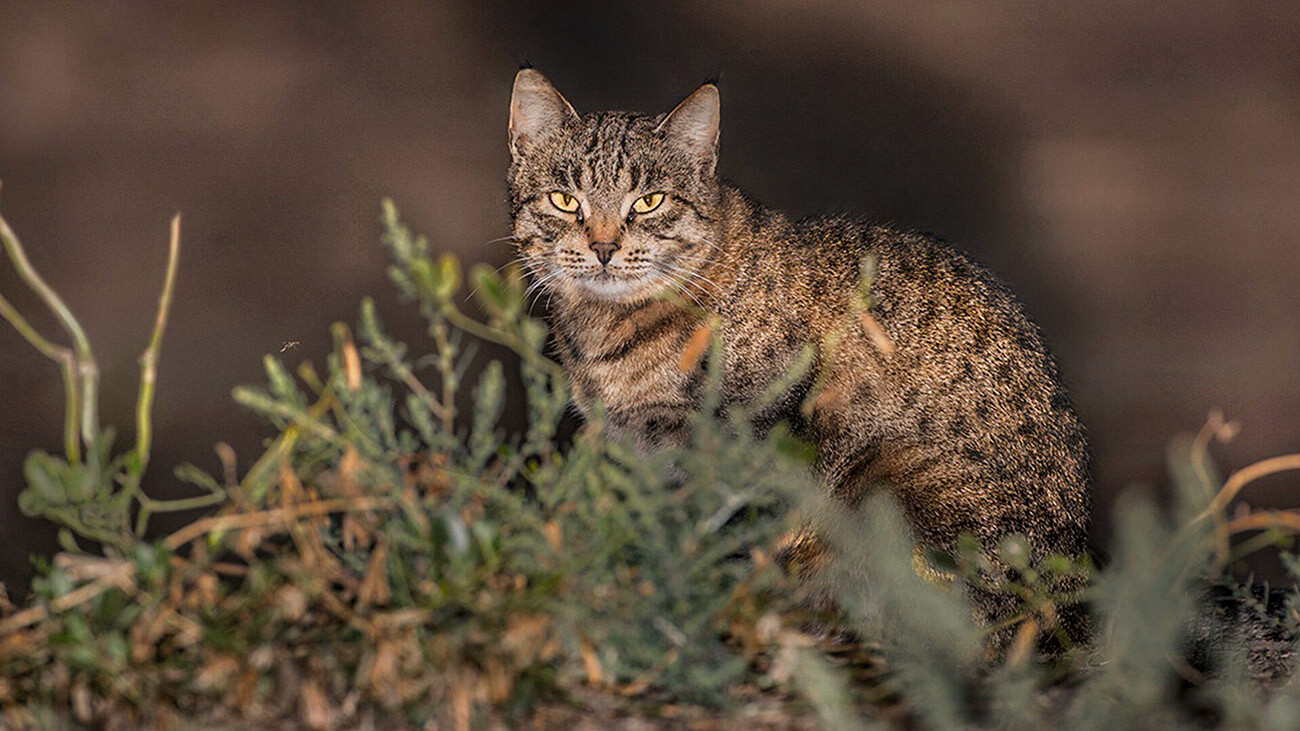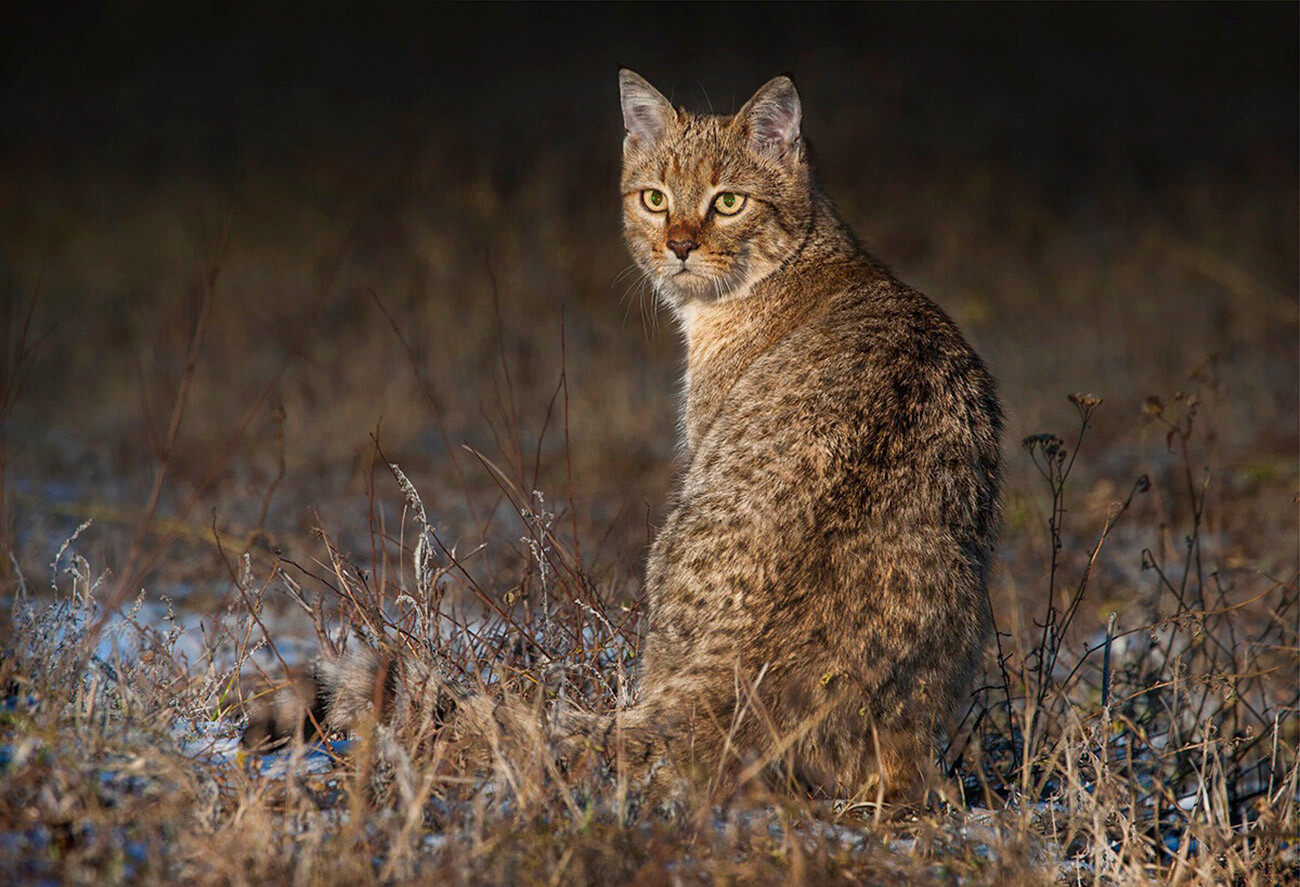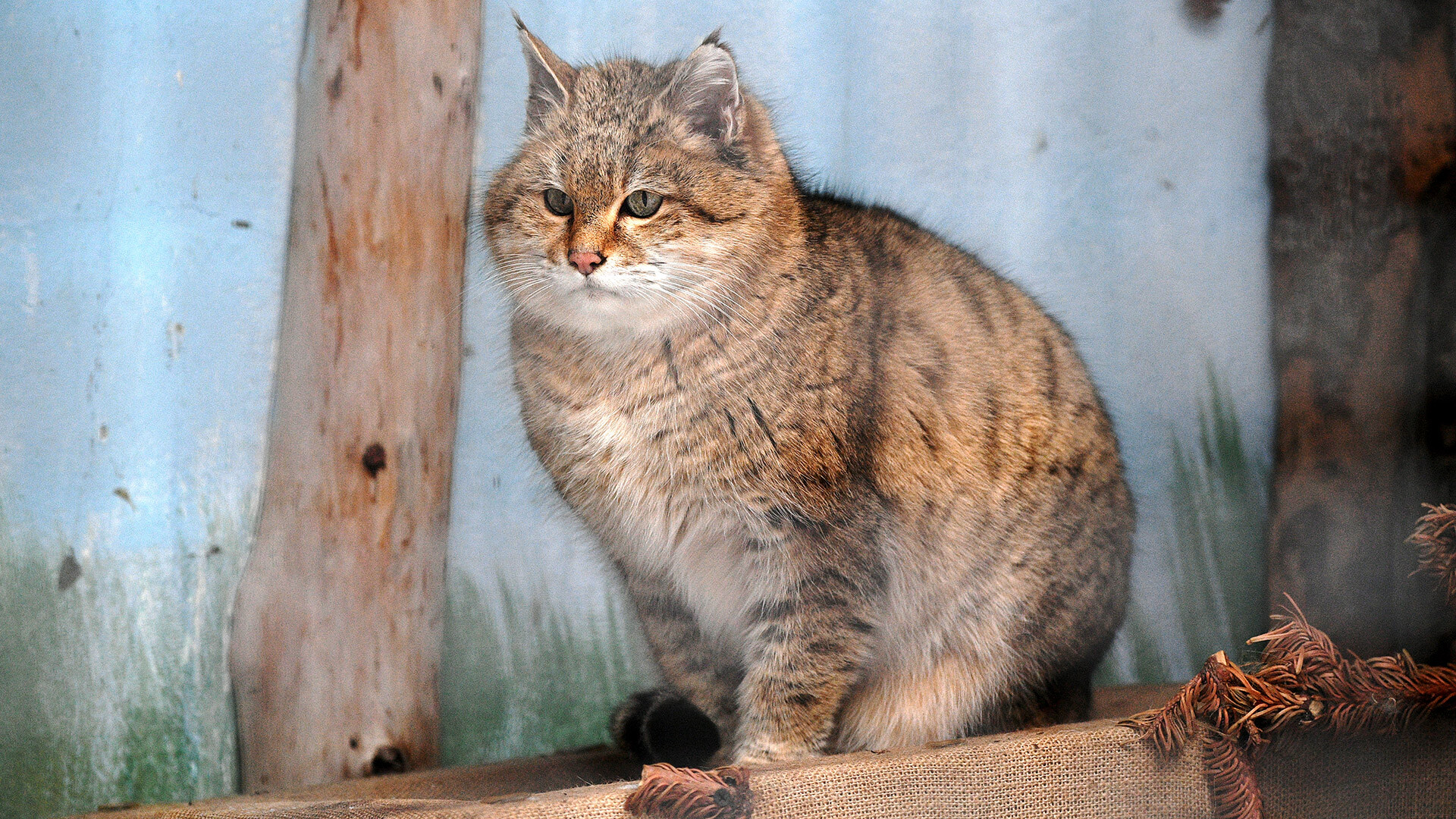

Steppe cat in a wild.
Valery MoseykinScientists believe that it was African steppe cats that gradually became domesticated about 9,000 years ago.
They first befriended humans in the Middle East and then began to accompany ships, fighting mice and rats. This is how they spread throughout the world. Most often, these wild cats live in Africa and Asia, while, in Russia, they are considered very rare.

Steppe cat in Moscow Zoo.
Maxim Blinov/SputnikIn the south of the country, steppe wildcats began to be registered only 30 years ago and they are included in the Red Books of the regions where they live. However, scientists believe that some of these cats are a hybrid of the steppe wildcat and the feral domestic cat.
The steppe wildcat is similar to the wild forest cat. However, the steppe cat has lighter fur and longer legs. Steppe wildcats tolerate water and can even climb into it in the heat, but they can't tolerate snow. They usually live in rocky crevices.
In the ‘Cherniye Zemli’ (‘Black Lands’) Nature Reserve in Kalmykia, steppe wildcats are caught on camera traps as they watch saiga antelopes with great interest. Maybe they think they are tigers?
Dear readers,
Our website and social media accounts are under threat of being restricted or banned, due to the current circumstances. So, to keep up with our latest content, simply do the following:
If using any of Russia Beyond's content, partly or in full, always provide an active hyperlink to the original material.
Subscribe
to our newsletter!
Get the week's best stories straight to your inbox